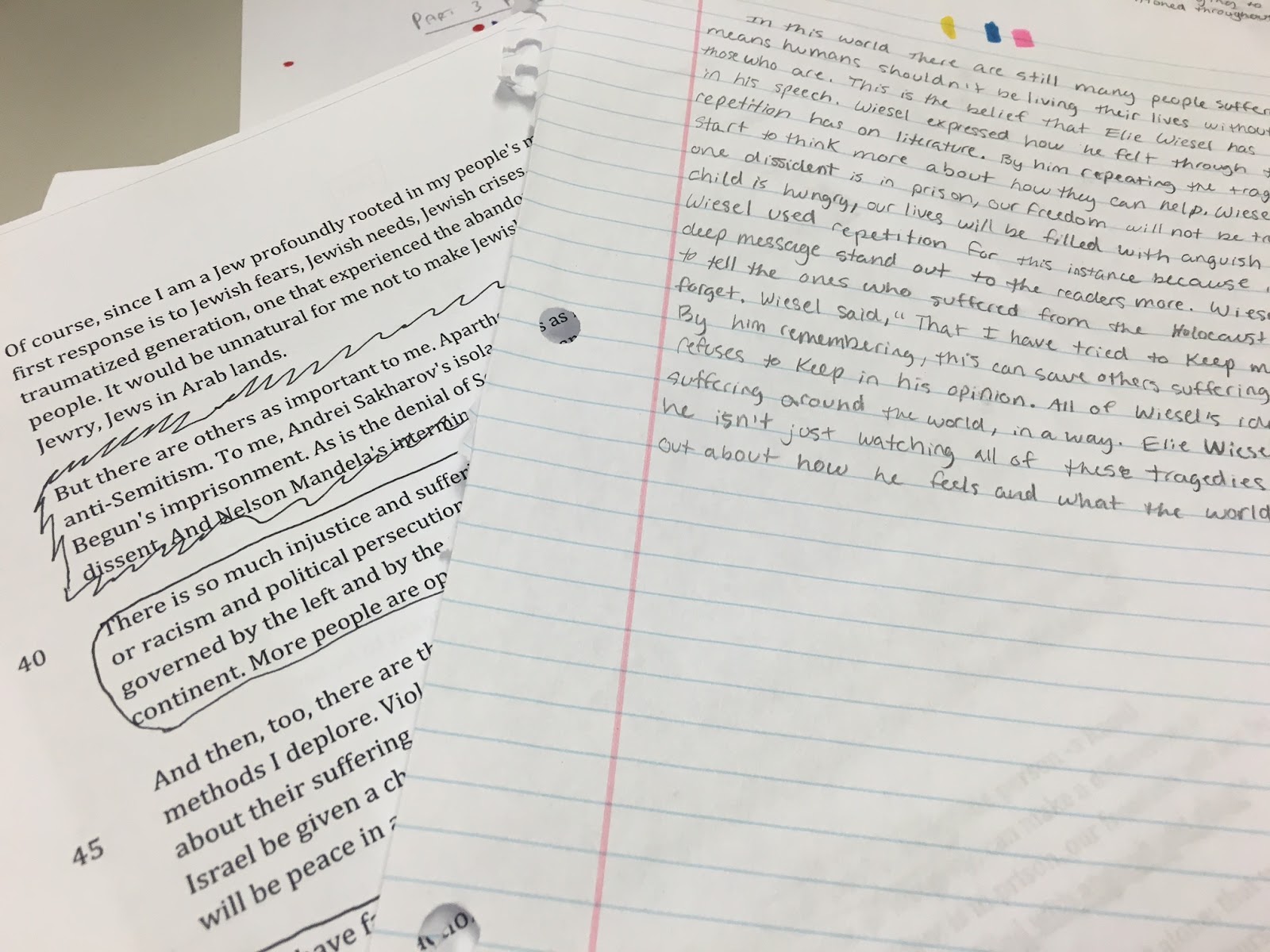Color Coded: A Fun Strategy for Formative Feedback
Wednesday, January 20, 20167:14 PMLike many teachers this time of year, I’m struggling to prepare my students for their midterm. I want to them to practice and get meaningful feedback to prepare them to do better, but it’s a challenge to keep up with the workload. As an English teacher, meaningful feedback often means A LOT of reading and writing. One of my goals is always to do more with less and to let technology do the work for me when it can. This time, though, I used an easy and no-tech strategy to provide specific formative feedback to help my students improve.
Color Coded
Instead of providing words, sentences, and even paragraphs of feedback, I simply color coded my responses. With a few colored lines or dots, I told students everything they needed to know. Each color represented a piece of specific feedback with the first color on a page conveying the rubric score of the task and the rest communicating why. The colors were assigned at random and helped me give the feedback my students needed in seconds. See my notes below for my first draft:I came up with this procedure on the fly, as my messy notes show. My goal was to respond to the work quickly so that every student left with 2-3 ideas towards revision and improvement. Students then discussed their work in groups or with me before moving forward to help add meaning.
Critical Thinking
Take a look at the sample below for an example.

The yellow dot tells this student that she earned a 2/3 on the rubric. Students studied the rubric before the work was returned, so she knows that a 2/3 means that it has promise but needs further work. The blue shows that she needs to specify and clarify the central idea and the pink to put more focus into her writing strategy. Three simple dots can provide so much meaning.
But to make the formative feedback even more important, and to push students to become active learners, I didn’t tell them what the colors meant right away. Instead, students were grouped by color and instructed to review the rubric. They then were asked to review their work individually and a group and to deduce the purposes. Whenever students can create their own meaning, the learning is more valuable.
In the end, we reviewed the colors and their purposes as a class. Students then asked questions, revised, and prepared for the midterm writing.
The yellow dot tells this student that she earned a 2/3 on the rubric. Students studied the rubric before the work was returned, so she knows that a 2/3 means that it has promise but needs further work. The blue shows that she needs to specify and clarify the central idea and the pink to put more focus into her writing strategy. Three simple dots can provide so much meaning.
But to make the formative feedback even more important, and to push students to become active learners, I didn’t tell them what the colors meant right away. Instead, students were grouped by color and instructed to review the rubric. They then were asked to review their work individually and a group and to deduce the purposes. Whenever students can create their own meaning, the learning is more valuable.
In the end, we reviewed the colors and their purposes as a class. Students then asked questions, revised, and prepared for the midterm writing.
Why I Love Formative Feedback
The meme below says it all. I’m tired of the assumption that everything must get points and a grade to have value. We teachers know that often the best learning is not quantifiable; it happens in authentic and spontaneous moments that are filled with feedback, growth, and reflection. I’m not ready to throw all grades out the window, but I do love the idea of using more formative feedback to promote student accountability, reflection, and understanding about their own work and progress.| Meme courtesy of http://robmcentarffer.net. |





0 comments